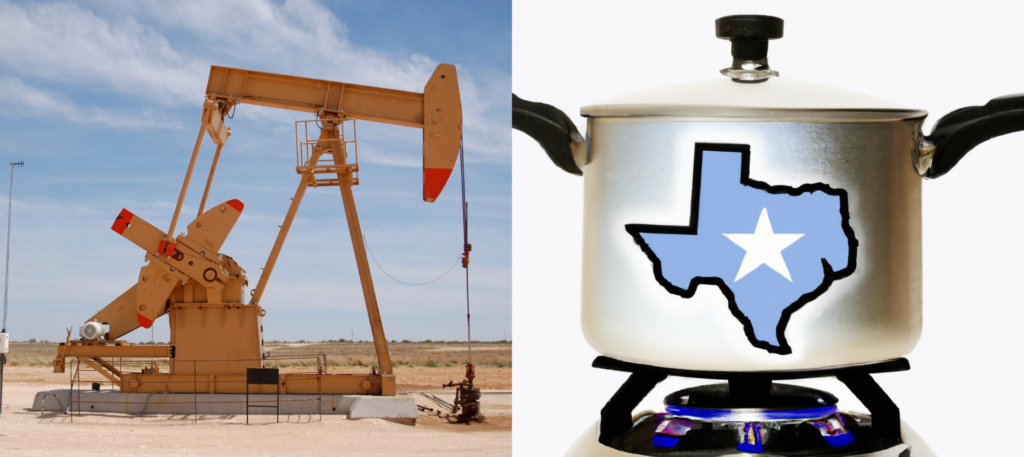Pat Patton, Dalton Gomez and Rob Bruant
In 2011, Oklahoma shook from the largest recorded earthquake at the time, a magnitude 5.7 event east of Oklahoma City. The event was one of many in a series of anonymous earthquakes inflicting this area of the state. The culprit – produced water injection into the Arbuckle formation. The Arbuckle formation, a Cambrian-Ordovician aged carbonate group, has significant porosity and permeability making it an ideal produced water injection target. The formation is the oldest unit in the stratigraphic column and overlays basement rock.
To curb the sharp increase in produced water-related earthquakes, Oklahoma regulators imposed restrictions on disposal, limiting the amount of produced water that could be injected. Over time, the magnitude and frequency of earthquakes decreased, and disposal curtailments were viewed as a successful remedy. The policy had broad implications for hydrocarbon production, however, significantly limiting oil production growth in the region.
Produced Water Disposal in the Permian Basin
Around the same time that disposal regulations were sweeping across the Oklahoma plains, horizontal well drilling in the Permian Basin was ramping up. Incredible well results spurred a rush to the basin and oil production began to climb. But for every barrel of oil extracted in the Permian Basin comes anywhere from 2-8 barrels of produced water. Having the benefit of many suitable injection zones, and learning from the missteps in Oklahoma, producers in the Permian largely targeted shallow formations for produced water disposal.
Some unintended consequences occurred. Activity in the basin continued to increase, exponentially increasing the volume of produced water year-over-year. As disposal volumes grew, shallow formations receiving water began to ‘pressure up’, that is, the volume of water injected was so significant that high pressure zones developed in certain portions of shallow formations.
Over-pressured shallow zones create difficulties for operators drilling through these intervals to reach deeper oil producing horizons. Operators incur increased drilling costs to mitigate pressure issues in shallow intervals. Additionally, over-pressured zones pose safety concerns due to unpredictable reservoir behavior, which can vary spatially and temporally. For disposal well operators, injecting fluid into pressurized zones requires more pumping power at an SWD facility, ultimately costing companies more to dispose of produced water.
To mitigate pressure challenges in shallow injection zones, some operators shifted their strategy and began to inject produced water into deep geologic formations in both the Midland and Delaware Basins, most notably the Ellenburger formation.
Deep Injection and Induced Seismicity in Texas and New Mexico
As one might have predicted, the rise in deep injection corresponded with a subsequent increase in earthquake magnitude and frequency. After all, the Ellenburger is time-equivalent to Oklahoma’s Arbuckle formation and shares many of the same geologic qualities, including overlay with basement rock. Like in Oklahoma, regulators in Texas and New Mexico stepped in and enacted Seismic Review Areas, or SRAs. The goal was the same, reduce earthquakes by curtailing injection. In some areas, Texas and New Mexico regulators asked operators to curtail deep disposal volumes and, and in other areas, to cease deep disposal altogether.
Once again, some operators shifted strategy, turning back to shallow injection intervals as the primary disposal zone. Unsurprisingly, pressure concerns continue. Dealing with pressure challenges are manageable, but at a cost. Today, the shallow intervals in the Permian Basin are largely over pressured in a growing portion of the region. In many areas, shallow intervals have pressure gradients over 0.46 psig per ft, a gradient that would be considered “normally pressured”. Produced water volumes continue to grow and even if produced water can eventually supply 100% of water needed to supply hydraulic fracking demand, there remains an ongoing need for disposal. The challenge for operators now is to understand pressure in shallow intervals, the related risks, added costs and implications for field development optimization. To understand spatial and temporal variations in shallow pressure, B3 insight built an integrated model that consumes injection data to aggregate and visualize shallow interval pressure spatially and temporally. The goal: to create a resource for operators to make better water management decisions. What the data has shown is that in certain areas, injection zones are pressuring up. Areas that might have been normally pressured a year ago are over-pressured today.
Optimizing Development in the Permian Basin: Balancing Induced Seismicity and Water Management
As the Permian Basin matures, shallow injection intervals continue to be a pressure cooker with no relief valve. Development optimization will be critically important if oil production continues its current growth trajectory. Understanding subsurface interval pressure will be foundational to safe, responsible and long-term development of critical Permian resources.
EMPOWERING SMART WATER MANAGEMENT
B3 Insight is building the definitive source for water data. We empower smart water management with data-driven intelligence for responsible and profitable decisions about water resources. Whatever your needs, B3 Insight’s OilfieldH2O platform can positively impact your water management and drilling completions – contact us at [email protected] or 720-664-8517 to learn more.




